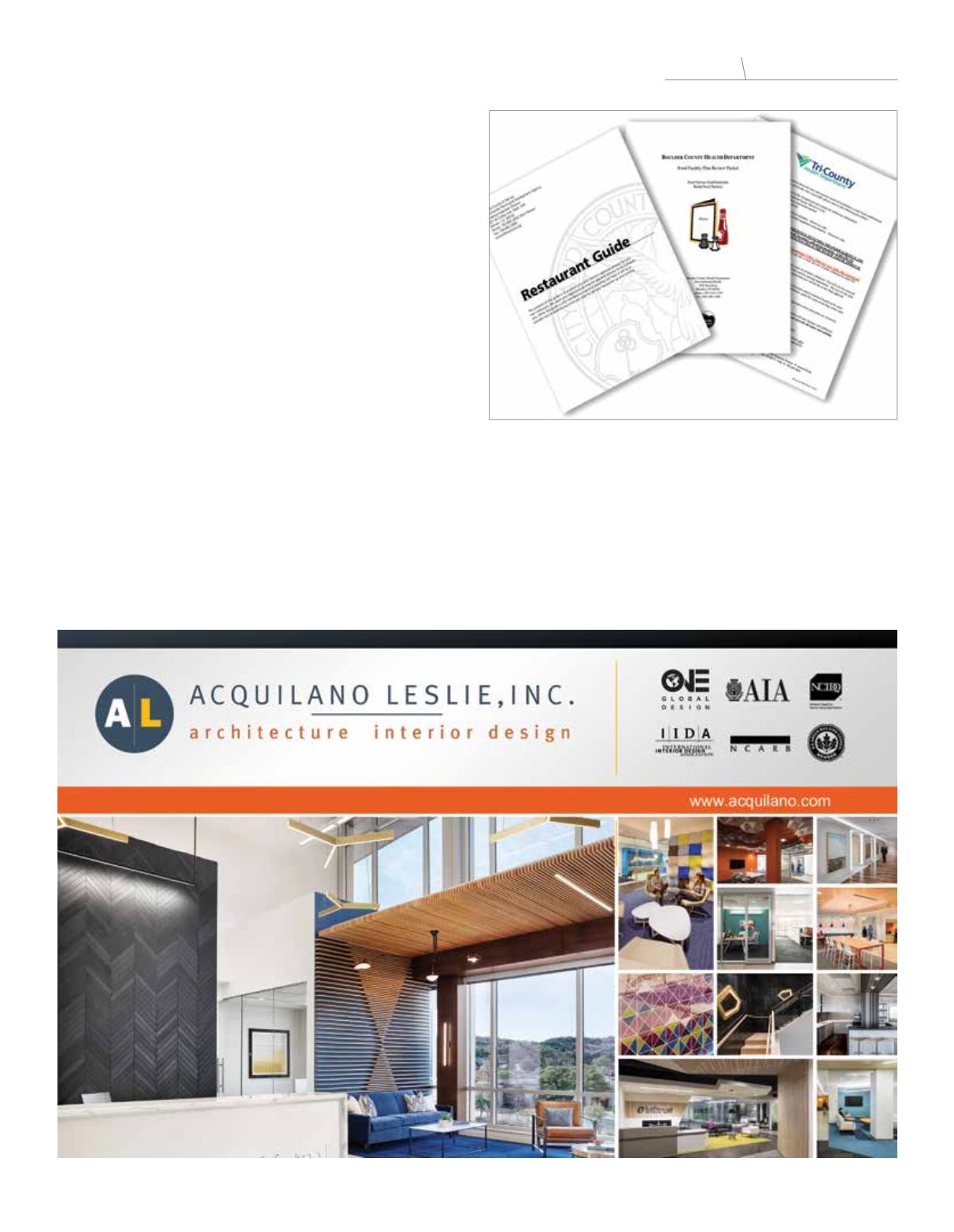

JUNE 2017 \ BUILDING DIALOGUE \
33
mit additional forms for that, instantly doubling the amount
of work and adding onto the timeframe. Being realistic and
building in buffer time can help with unexpected deviations.
Be Flexible with the Design
Ask questions and collaborate with your kitchen designer.
Understanding intentions, whether they be legal, personal
preference or something else influential, before asking for
revisions will save everyone time in the long run. Trust us –
we don’t just all love hand sinks so much that we all want to
place them everywhere; it’s required.
Flooring, walk-ins, sinks, janitorial areas, exhaust hoods
and food shields – their placement and finishes all are con-
sidered hot areas when it comes to pleasing the health de-
partment. Review and re-review them with your kitchen
consultant. This will not only ensure they are correct, but
also will help you feel comfortable with the decisions and
confident enough to discuss them with the health depart-
ment if questions arise.
If there are any changes or modifications that come up in
a first-round review with the health department, make sure
to share those with the team and get them taken care of im-
mediately. Nothing’s worse than having to wait for another
round of changes because the first ones weren’t properly dealt
with.
Don’t forget that it’s not just food service areas! Personal be-
longing storage, water heating systems, lighting – these are all
examples of extra areas that the health department may need
to approve.
Going back to our first point, understandingwhat’s required
and avoiding simplemistakes during the submission will end
up making you the hero.
\\
Amoller@ricca.com lhomersham@ricca.comELEMENTS
Culinary Design
Don’t assume health department guidelines are the same
within a state; they vary from county to county. Be sure to
review a copy of the correct one when starting your project
















